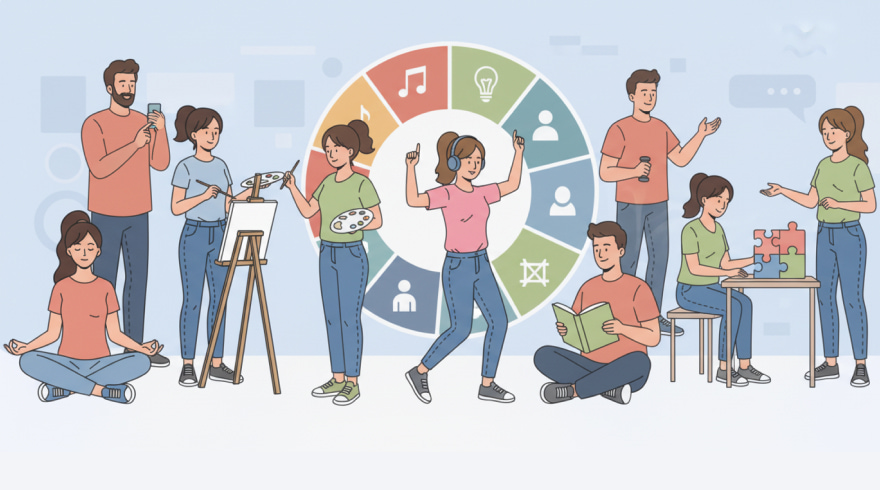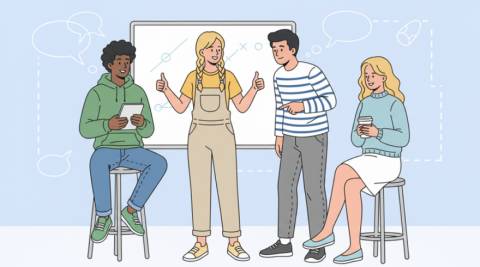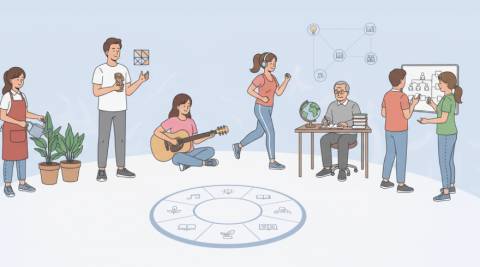A Practical Guide to Profiling the Eight Intelligences Assessment

What It Measures and Why It Matters
Across classrooms, workplaces, and coaching sessions, people demonstrate strengths that look nothing alike: a teammate deciphers patterns in data, a friend composes melodies on the fly, and a classmate negotiates conflicts with uncanny tact. The multiple intelligences framework captures this diversity by describing distinct yet interrelated capacities, such as linguistic, logical-mathematical, spatial, bodily-kinesthetic, musical, interpersonal, intrapersonal, and naturalist domains. Rather than forcing everyone through a single aptitude funnel, it observes how individuals learn, express understanding, and solve problems through different channels. This perspective empowers educators and leaders to design options for demonstrating mastery, which increases engagement and fairness.
In practice, educators and facilitators choose instruments that examine preferences, strategies, and evidence of performance in authentic contexts. In many programs, coaches incorporate a multiple intelligences assessment that aligns with age, culture, and goals to capture nuanced learning tendencies. By combining self-reports with performance tasks or portfolios, the process surfaces abilities that traditional tests overlook. Over time, the resulting profile becomes a compass for selecting subjects, projects, and roles that fit the learner’s strengths while still challenging them to grow.
- It spotlights hidden talents that may not appear on standardized tests.
- It offers language for discussing strengths without ranking people.
- It aids differentiation, personalization, and inclusive pedagogy.
- It informs career exploration and collaborative team design.
Origins, Theory, and Evidence-Informed Practice
Howard Gardner’s theory proposed that intelligence is not a single monolith but a constellation of competencies shaped by biology, culture, and experience. Over decades, researchers and practitioners have refined tools that translate the theory into actionable insights for instruction and coaching. While debates continue about constructs and measurement boundaries, the practical value is clear: when learners can leverage a favored modality, their motivation and output often rise. This pragmatic lens encourages educators to examine outcomes, adjust instruction, and track growth, even as scholarly conversations evolve.
Across teacher preparation and organizational development, specialists sometimes blend observational rubrics with reflective inventories to triangulate insights. In faculty workshops, teams may introduce a Gardner multiple intelligences assessment alongside classroom artifacts to anchor decisions in real evidence. The triangulation step matters because observed behavior, self-perception, and task performance each reveal different aspects of ability. When these sources point in the same direction, the profile gains credibility, improving the odds that interventions will stick and transfer to new tasks.
- Use descriptive feedback tied to observable behaviors and products.
- Track change over time rather than relying on a single snapshot.
- Balance learner voice with external evidence of performance.
- Document context, since environment can amplify or mute strengths.
Benefits, Use Cases, and Strategic Outcomes
For K–12 classrooms, this approach supports choice-driven assignments, where students can present understanding through essays, models, podcasts, or demonstrations. In higher education, it informs study strategies and project selection, reducing frustration by aligning tasks with cognitive preferences while scaffolding weaker areas. In the workplace, team leads build complementary groups, pairing analysts, storytellers, and implementers to increase throughput and creativity. Coaches and counselors also use profiles to clarify motivation, unlock confidence, and reduce the trial-and-error cycle that burns time and energy.
Within school improvement plans and professional learning communities, leaders evaluate curricular materials for flexibility and representation. In these reviews, teams may document findings from an assessment of multiple intelligences to justify varied pathways toward the same standards. When learners can choose modes that fit their strengths, attendance improves, productive struggle increases, and equity gaps can narrow because more students see viable routes to success. The ripple effects include better collaboration norms, stronger student voice, and assessment systems that value growth as well as mastery.
- Stronger engagement through autonomy and relevance.
- More precise differentiation for mixed-readiness groups.
- Greater transfer when strategies match authentic tasks.
- Richer feedback that recognizes diverse contributions.
How to Conduct, Score, and Share Results
Implementation works best when you treat the process as a cycle: plan, gather evidence, interpret, and act. Start by clarifying the goal, program placement, study skills coaching, or team composition, because purpose determines the right instruments. Combine quick pulse checks with deeper tasks to balance efficiency and validity, and be transparent with participants about how results will be used. When possible, capture artifacts, videos, journals, prototypes, that illustrate abilities beyond numbers on a page.
For learners who prefer autonomy and reflection, many programs incorporate a multiple intelligences self assessment as one component among several. After participants complete inventories, facilitators observe them in authentic tasks, compare results, and debrief in plain language. Sharing a concise visual summary helps stakeholders grasp the profile at a glance and discuss implications for instruction, coaching, or work allocation. The brief matrix below shows a practical sequence that blends efficiency with depth.
| Step | What to Do | Why It Matters | Time |
|---|---|---|---|
| Plan | Define purpose and select instruments | Aligns evidence with decisions | 10–20 min |
| Gather | Use inventory plus performance task | Triangulates self-report and behavior | 30–60 min |
| Interpret | Compare patterns and discuss with learner | Builds shared understanding | 20–30 min |
| Act | Set goals, choose strategies, schedule follow-up | Turns insights into progress | 15–25 min |
- Protect privacy and explain limits of the data to participants.
- Use plain-language graphics to make profiles actionable.
- Revisit results after new experiences to capture growth.
Interpreting Profiles and Planning Next Steps
Interpretation begins with patterns, not labels. Look for clusters of evidence that reveal how a learner prefers to approach problems, then match strategies accordingly: outline and debate for linguistic dominance, modeling and coding for logical strengths, sketching and mind-mapping for spatial thinkers, or embodied role-play for kinesthetic learners. Next, select one growth target that stretches comfort zones without eroding confidence, and pair it with a scaffolded practice routine. That balance between leverage and challenge fuels momentum.
For reporting, concise narratives beat cryptic charts. Translate results into practical recommendations: study schedules, toolkits, collaboration roles, and products to attempt first. A living profile, updated after projects, internships, or new courses, prevents stale assumptions and increases accuracy. Finally, close the loop by checking outcomes: did grades improve, did teammates collaborate more fluidly, did the learner persist longer, and did they transfer strategies to novel tasks? These questions transform profiles from static snapshots into engines for continuous improvement.
- Pair strengths with growth edges to design balanced plans.
- Document strategies that worked so they can be repeated.
- Invite reflection to deepen metacognitive awareness.
- Set checkpoints to evaluate progress and refine tactics.
Common Pitfalls and Best Practices
Misuse often stems from treating profiles as fixed labels or excuses, rather than dynamic guides. Avoid one-and-done testing, because preferences shift with age, context, and experience; instead, refresh evidence after meaningful learning or work cycles. Beware of confirmation bias: people may only notice behaviors that fit an initial hunch, so invite contrary evidence. Above all, keep equity in view, access to instruments, instruction, and opportunities must be fair, or the process can reinforce, rather than reduce, disparities.
To do it well, embed the process in real tasks and communities of practice. Calibrate rubrics with colleagues, anchor claims in observable products, and provide multiple ways to demonstrate mastery. When sharing results, use narrative feedback that names successes and offers concrete next steps. Over time, the culture shifts: learners advocate for themselves, instructors design with flexibility, and teams build synergy by combining complementary talents toward ambitious goals that matter.
- Never use profiles to gatekeep or lower expectations.
- Collect evidence from varied contexts and timeframes.
- Co-construct goals to increase ownership and follow-through.
- Monitor impact and adjust supports with humility and data.
FAQ: Clear Answers to Common Questions
How many intelligences are typically considered, and can the list change?
Most frameworks describe eight core intelligences, with some models adding a ninth or reinterpreting boundaries as new research emerges. The exact list can vary with culture and context, but the central idea remains consistent: people demonstrate distinct patterns of capability that deserve recognition and strategic support in learning and work.
Is this approach the same as learning styles?
No, learning styles claim that everyone learns best through one sensory channel, while multiple intelligences describes broader capacities for processing information and creating value. The approach encourages using varied methods to teach and assess, but it avoids pigeonholing people into rigid categories.
Can younger children participate meaningfully in the process?
Yes, when instruments are age-appropriate and paired with observations and playful tasks. Short, concrete activities, parent input, and teacher notes can reveal emerging strengths without over-reliance on self-report surveys that require advanced reading or metacognitive skills.
How often should profiles be revisited?
Refresh them after significant learning experiences, new roles, or at set intervals such as each term or quarter. Revisiting ensures plans stay aligned with current abilities, prevents stale assumptions, and supports continuous improvement with timely adjustments.
What evidence increases confidence in the results?
Multiple sources are best: reflective inventories, performance tasks, artifacts like journals or prototypes, and observations in authentic settings. When these converge, the picture becomes more reliable, giving you a stronger basis for instructional design, coaching, and team formation.
Latest News



